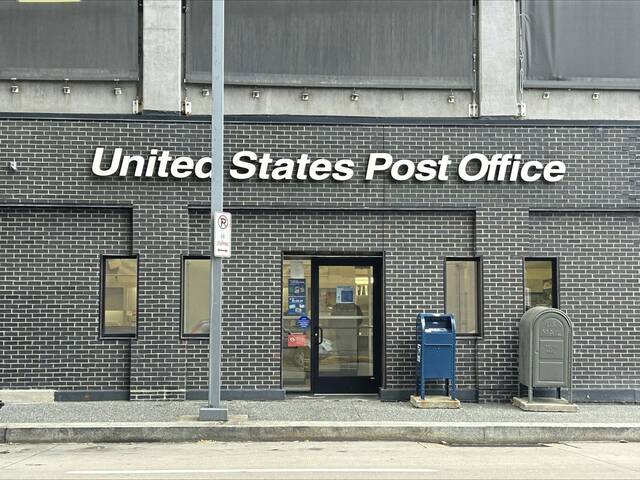Following every census, legislative districts are redrawn to reflect population changes, preserving the idea of “equal representation.” Districts are currently being drawn for state legislative elections next year.
This process is already generating debate, with concern over gerrymandering, misrepresentation of the 2020 presidential election results and attempts to curtail voting rights. However, the outcome is important.
Following are plans for the Allegheny County state House and Senate districts, as examples of how to do this rationally, while meeting the criteria outlined. Let’s see what’s required.
District populations should deviate, at most, by 5% above or below optimal population. Parts of individual districts cannot be physically separated from each other or be unwieldy. Each municipality should be located within a single district, when possible. Existing districts should be disrupted as little as possible. Districts with majority or plurality Black populations are important, better affording the possibility of Black representation.
Now, let’s examine the details in these plans.
Pennsylvania State House: 1,329,590 people reside in these proposed districts; 1,250,578 (94%) in Allegheny County, 62,070 (5%) in Washington County and 16,942 (1%) in Westmoreland County, 1,083,009 (81%) being age 18 or older. There are 167,024 (13%) Blacks, 59,563 (4%) Asians and 35,825 (3%) Hispanics.
Included are 21 districts, a reduction of two, covering all of Allegheny County, and parts of Washington and Westmoreland counties. The optimal population per district is 64,053 people, the acceptable range being between 60,850 and 67,256 people. These districts deviate from a low of 61,288 people, and a high of 67,114 people, respectively.
There are 144 municipalities in these districts; 130 in Allegheny County (including 32 Pittsburgh city wards), 12 in Washington and two in Westmoreland County. Seventeen municipalities, including 15 city wards, and 122,526 people in Allegheny County are transferred between districts.
An additional Washington County municipality, representing 8,209 people, is eliminated from the 46th District in order to reach near optimal population and minimize districts crossing county lines.
It’s impossible to consistently situate entire municipalities or city wards in a single state House district while maintaining near optimal district populations. However, 16 precincts, including 7 Pittsburgh wards and one municipality, representing 16,207 people, have been consolidated within five separate new districts, respectively. This meets the goals of maintaining municipal integrity and keeping districts within the optimal population range.
A total of 403 precincts, in 11 municipalities, including eight city wards, representing 381,500 people, remain situated in multiple districts. Of these, all but one precinct are located in two separate districts, with one city ward split between three districts. A single municipality that was previously located in one district is now divided between two districts.
The Black population in Allegheny County currently sitting in the state House represents those four districts that lost the most population over the past decade. Consequently, to reach optimal district populations, they have to make up the most population from neighboring districts, while also maintaining Black population. Without even considering the needs of these adjacent districts, this represents a narrow pool from which to draw while still meeting each of the competing requirements.
That said, the percentages of Blacks in the proposed 34th and 35th districts have, essentially, been maintained; the corresponding percentage in the 19th district declined by 4% and the Black plurality population in the 24th District is preserved, even while falling by 2%.
Pennsylvania State Senate: 1,301,405 people live in these proposed districts, 1,250,578 in Allegheny County (96%), 47,600 (4%) in Washington County and 3,227 (.03%) in Westmoreland County; 1,060,085 (82%) are age 18 or older. There are 164,306 (12%) Blacks, 59,479 (4%) Asians and 35,243 (2%) Hispanics.
The reapportioned Allegheny County delegation maintains the current five districts, covering all of Allegheny County, and parts of Washington and Westmoreland counties. The optimal population is 260,054 (2%) people, affording a range of between 247,051 and 273,057 people. These districts, range from a low of 259,030 people, and a high of 261,026 people, above the optimal population, respectively.
A total of 140 municipalities are in these districts; 130 in Allegheny County (including 32 Pittsburgh city Wards), seven in Washington County and one in Westmoreland County. Nineteen municipalities and five Pittsburgh wards, with 170,520 people, are transferred between districts in Allegheny County.
Eight municipalities, and 44,483 people, from Westmoreland County, are removed from the 45th District. The single municipality in Westmoreland County that is added to the district contains 3,227 people. Six more municipalities, and 24,654 people, in Washington County, are added to the 37th District. These additions help reach optimal district populations and maintain the integrity of two municipalities that cross county lines.
Municipalities and Pittsburgh wards aren’t currently divided between multiple Senate districts. Aside from Philadelphia, this is the case statewide, greatly preserving municipal integrity.
Myriad factors conspire against perfection. However, the loss, or gain, of population makes changes unavoidable. Nonetheless, all requirements have been met here.
Districts are within the prescribed parameters of their respective optimal populations. Districts are more compact and contiguous. More municipalities and wards are consolidated within single state House districts, and fewer districts, at both levels, cross county lines. Municipal disruption is minimized. State House districts with Black representation are maintained. These will not be the final districts, but they reflect how districts might look, if the goals and requirements are taken seriously.
While never easy, greater scrutiny from the press and public and transparency, as promised by the bodies charged with drawing these lines, offer hope. In addition, in 2012 and 2018 the state Supreme Court threw out initial state legislative district reapportionment plans and existing congressional districts, both because too many municipalities and counties were divided between multiple districts. In short, matters of compactness, contiguity and municipal integrity.
These decisions illustrate how bad reapportionment can harm communities, and citizens, with common interests. They offer a final remedy, affording such communities a greater opportunity to work together for mutual benefit, the point of the exercise.
David Wassel is a McKeesport attorney and political consultant.








